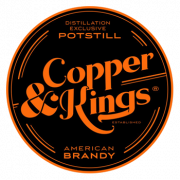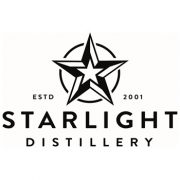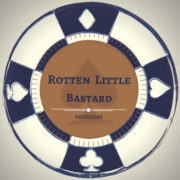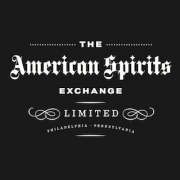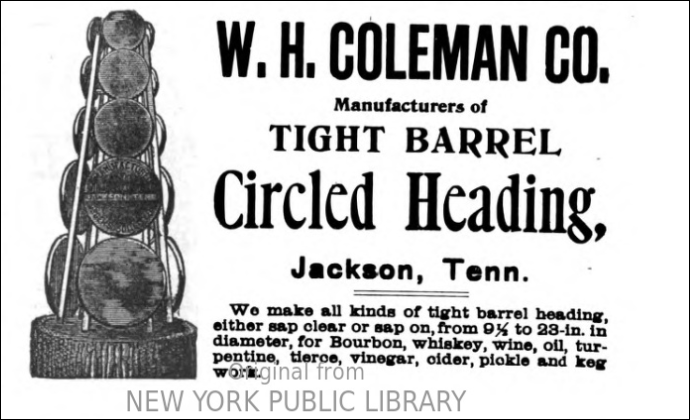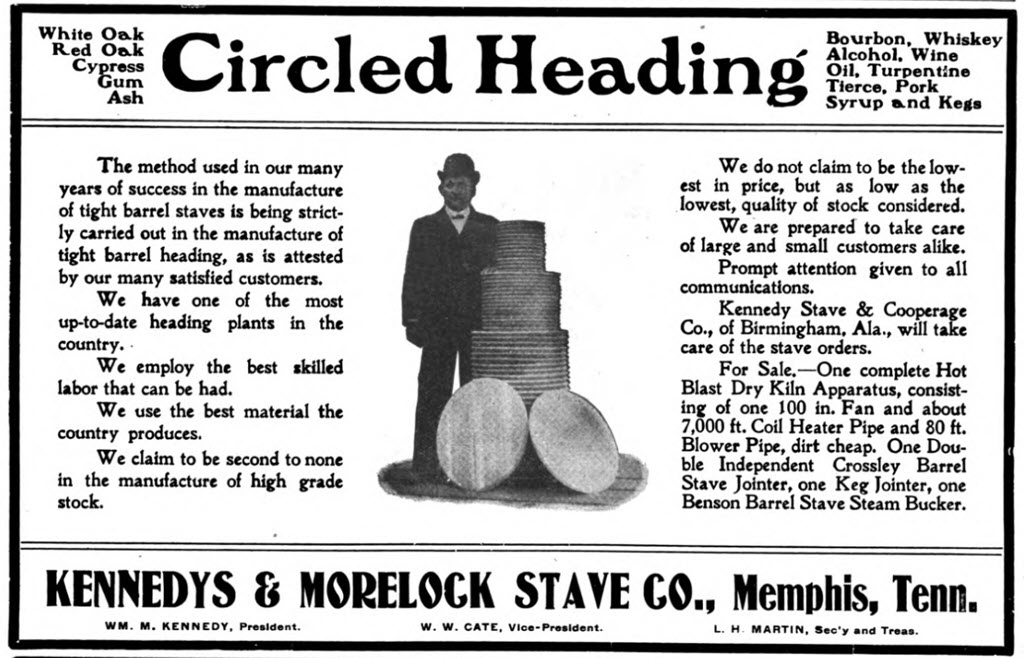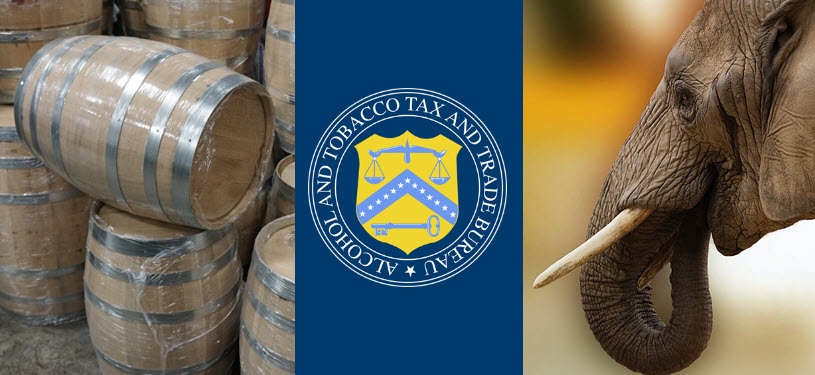
In December 2017 craft spirits makers and large heritage distillers united as the Craft Beverage Modernization and Tax Reform Act was passed and for the first time since the Civil War, the Federal Excise Tax (FET) was reduced. The entire industry collectively celebrated since all boats would rise with the tax savings. The reduction, though only guaranteed for two years, allowed craft spirits makers to hire new employees, purchase new equipment or even take home a paycheck for the first time since they opened their doors.
On November 26, 2018 the Alcohol and Tobacco Tax and Trade Bureau (TTB) released Notice No. 176: “Modernization of the Labeling and Advertising Regulations for Wine, Distilled Spirits, and Malt Beverages.” It’s a 132 page document that has some lofty goals.
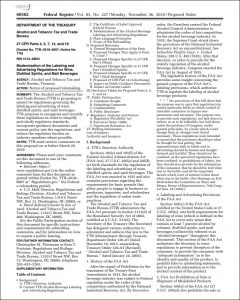
Modernization of the Labeling and Advertising Regulations for Wine, Distilled Spirits, and Malt Beverages. Click to view the full proposal.
The document starts out sharing the history of how we got where we are today. “The first regulations implementing the labeling and advertising provisions of the FAA Act were promulgated in 1936 by the Federal Alcohol Administration (FAA). Over the next several decades, various amendments to these regulations were published by TTB’s other predecessor agencies, the Internal Revenue Service (IRS), and the Bureau of Alcohol, Tobacco and Firearms (ATF). TTB assumed responsibility for the enforcement and implementation of these regulations in January of 2003, pursuant to the Homeland Security Act of 2002.”
The recommended changes in this document say, “The amended regulations will take into account modern business practices and contemporary consumer understanding in order to modernize the regulations.”
“In preparation for this rulemaking, TTB reviewed its regulations, public guidance, and labeling review practices to identify policies and interpretations that are relevant but have not yet been codified in the regulations, as well as those that are no longer relevant and can be eliminated. In all, TTB reviewed 90 rulings and industry circulars, and incorporated all or parts of approximately 38 of them into the proposed regulations.”
And based on a memorandum that went into effect on June 1, 1998 Federal agencies are required to write regulations in ‘‘plain language.’’ With this in mind, the TTB is updating the regulations with these goals in mind.
- Use the active voice in the regulations, whenever possible;
- Use shorter sentences, paragraphs, and sections;
- Minimize the use of jargon and unnecessary technical terms;
- Clarify and simplify the regulatory requirements;
- Create consistency in the treatment of the three commodities, as appropriate;
- Break large sections into smaller, more focused sections for better readability; and
- Make it easier for readers to find information through the tables of contents.
Stay Informed: Sign up here for the Distillery Trail free email newsletter and be the first to get all the latest news, trends, job listings and events in your inbox.
A lot of what’s in the 132 page modernization act is wonderful and accomplishes many of the goals stated above. They are simply trying to take years of rulings, laws, and amendments and update them into one clean document that will be as similar as possible between beer, wine and distilled spirits.
If you are having trouble sleeping one evening by all means, read the entire thing here. You can read it online or download and mark it up with a highlighter to your hearts content. You’ll either fall asleep or it will rile you up so you definitely can’t sleep. Rather than try to eat the entire elephant in this article, we are highlighting a single point that has caused a stir among the nations craft spirits makers and many of the suppliers that provide products and services to the industry. As much as the December 2107 FET reduction brought all distillers together this one item could splinter the industry down the middle between the craft spirit makers and the larger heritage distillers.
The Master Distiller’s “Rule of Thumb” on Flavor
Back in 2015 we shared a story by the Whiskey Prof, Bernie Lubbers. His master distiller’s rule of thumb says that the final flavor of a whiskey can broken down into the following four components – 10% yeast strain, 15% distillation, 25% small grains and 50% maturation. I’ve heard some distillers go as far as saying that the maturation in the barrel can provide as much as 75% of a bourbons flavor. And 100% of a whiskies color is from the barrel. I would also add water into that mix. We could argue about the percentages all day but, you get the idea, the oak barrel matters, a lot.
Proposal to Modify the Definition of ‘Age’
The details are in the details. Here’s a side by side comparison of the existing vs. the proposed definition of age.
Existing – Age is the period during which, after distillation and before bottling, distilled spirits have been stored in oak containers. (Chapter 8)
Proposed – There are actually two instances where the TTB has defined age. The first one says “stored in or with oak” and the second only includes “stored in.” We are not judging, we are just sharing here. There is information near the end of this article that tells how to make your voice heard.
“TTB proposes to modify the definition of “age” to simplify it and to make clear that spirits are only aged when stored in or with oak. The wood contact creates chemical changes in the spirits, which is the aging process. Thus, for example, spirits stored in oak barrels lined with paraffin are not “aged.”” (Page 32)
“Age. The length of time during which, after distillation and before bottling, the distilled spirits have been stored in oak barrels in such a manner that chemical changes take place as a result of direct contact with the wood. For bourbon whisky, rye whisky, wheat whisky, malt whisky, or rye malt whisky, and straight whiskies other than straight corn whisky, aging must occur in charred new oak barrels.” (Page 84)
On a sidenote, the use of parrafin mentioned above refers to a requirement that applies to Bottled in Bond Vodka or Gin. The TTB is seeking comment on this as follows. “In order to maintain parity between whisky that is aged and vodka and gin, which do not undergo traditional aging, vodka and gin are required to be stored in wooden containers in order to use ‘‘bond’’ or similar terms, but the wood containers must be coated or lined with paraffin or another substance to prevent the vodka or gin from coming into contact with the wood. TTB seeks comment on whether it should eliminate the requirement that bonded vodka or gin be stored in wooden containers. TTB rarely sees ‘‘bonded’’ vodka or gin; ‘‘bond’’ and similar terms are most frequently used on labels of whisky.” (Page 34) In other words, why bother trying to be “bonded” for aging Vodka or Gin in an oak container lined with parrafin if its never allowed to interact with the wood? We’ll touch on Bottled in Bond in another article.
Proposal to Modify the Definition of ‘New Charred Oak Container’ to include Shape and Size
Current regulations do not require a specific shape or size requirement for barrels. This latest proposal wants to change all that.
Existing – “For bourbon, rye, wheat, malt or rye malt whiskies and straight whiskies, other than straight corn whisky (which must be stored in used or uncharred new oak containers), the oak container must be a charred new oak container.” (Chapter 8)
Proposed – “TTB proposes to define the term “oak barrel,” which is used with regard to the storage of certain bulk spirits. TTB and its predecessor agencies have traditionally considered a “new oak container,” as used in the current regulations, to refer to a standard whiskey barrel of approximately 50 gallons capacity. Accordingly, TTB proposes to define an oak barrel as a “cylindrical oak drum of approximately 50 gallons capacity used to age bulk spirits.” However, TTB seeks comment on whether smaller barrels or non-cylindrical shaped barrels should be acceptable for storing distilled spirits where the standard of identity requires storage in oak barrels.” (Page 32)
Oak barrel. A cylindrical oak drum of approximately 50 gallons used to age bulk spirits. (Page 84)
The proposal above raises some major issues for the vast majority of craft spirits distillers. Everyone understands they have to use a new charred oak container. That part is simple enough to understand but there is currently no restriction on size or shape. Craft distillers and even some of the larger distillers are experimenting with different size barrels and that’s a really good thing for the industry and consumers.
During the 1950s and 1960s, the Seagram Co. conducted extensive research into all aspects of the whisky-making process.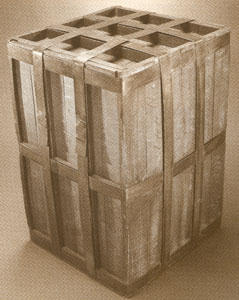
One of the experiments conducted in the Waterloo Ontario, Canada plant involved a square whisky barrel design. Ageing whisky in a square barrel did seem to result in a whisky of a different character, but the logistics of moving square barrels soon proved this design impractical.
Defining a Standard or Stifling Innovation?
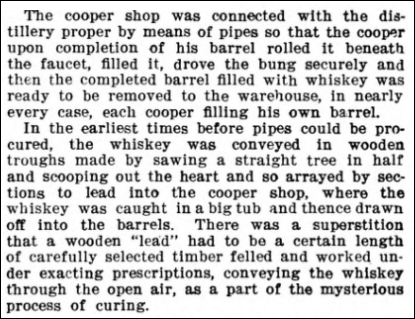
Vintage March 1906 issue of ‘The Barrel and Box’ talking about the use of hollowed out logs for pipes. Should this be a part of the new regulations?
One of the great things about many of the craft spirits startups is they like to experiment. Unlike some of the bigger brands that have to answer to share holders the smaller craft distillers are only limited by their imaginations and of course the TTB rules. These new rules of establishing a size and shape would be a mistake. First of all, across the spectrum of craft spirits makers you’ll find barrels ranging in size from 5, 10, 15, 30 or 53 gallons. Distillers use the different sizes for many different reasons. Many believe the smaller barrel allows for more contact of the liquid to the wood and therefore their spirits can mature, not age because well, age is age and you can’t change that but you can try to get a higher wood to liquid contact ratio. From a startup point of view, the sooner these entrepreneurial businesses can get product bottled and on the shelf, the sooner they’ll be ringing up the cash register.
What About the Existing Craft Spirits Aging in Smaller Barrels Today?
Let’s also consider the fact that you can’t move the goal posts when the game has already started. This is true for the distillers and the cooperage’s that provide them with barrels. I spoke with Richard Hobbs of The Barrel Mill. Richard said, “The Barrel Mill is the largest of the small barrel makers. 90% of the barrels we sell are between 5 and 30 gallon barrels and the remaining 10% are 53 gallon barrels.” He said if this proposal were actually to pass, it could put him and his 50 employees out of work.
This could also be devastating to the distilleries if the bourbon they are aging suddenly does not qualify as bourbon. That could lower the market value of their product if it was bumped down from, “Bourbon, America’s Native Spirit” to a whiskey or specialty spirit. It would also have a rippling effect on their distillery operations if they had to retool their distillery to handle the larger barrels to meet the proposed guidelines.
Catoctin Creek Distilling uses nearly all 30 gallon barrels. When Scott Harris started the distillery in 2009 his wife Becky, a chemical engineer by trade, was his first full-time employee and head distiller. They chose to use 30 gallon barrels because she could easily move them around the distillery by herself. Something that would be much more difficult with a 53 gallon barrel that could weigh up to 550 lbs. when fully loaded. Scott emphasized that, “The main thing is to keep the regulations flexible to allow for innovation.”
In talking with Alan Bishop, Head Distiller for Spirit of French Lick he pointed out that, “There are so many things that go into the aging of spirits the list is almost endless. The size of the barrel is just one of many things.” Being a history buff he also shared that prior to World War II the standard barrel size was 48 gallons. It was during the war that barrels expanded to 53 gallons.
A visit to the Angel’s Envy Distillery website confirms that information. According to Angel’s Envy, “Up until World War II, the standard barrel size was 48 gallons. Barrels of this size were easier to manage and roll through the rickhouse, and the racks were built to accommodate their size. But as the Second World War continued on without an end in sight, resources became more precious. Resources like lumber. Cooperages and distilleries had to figure out a way to continue to age their whiskeys while cutting back on the amount of wood they used. What they came up with was pretty ingenious. By increasing the barrel size to 53 gallons, they could store more whiskey per barrel, but the new containers would still fit on the original racks without having to massively upgrade the rickhouses.” Have you ever heard someone go on and on about the vintage whiskey they recently tasted. The smaller barrel and of course the age may have something to do with that.
Does the TTB Know What Size Barrels are Aging in Distilleries Today?
The TTB has very specific reports that are required to be submitted to them every month. To help get clarification on whether the TTB knows what size barrels are aging in distilleries across the country, I reached out to Donald Snyder, Founder of Whiskey Systems. His software is used by hundreds of distilleries across the the world. Donald said, “The monthly distiller’s storage report includes the total number of proof gallons in storage but doesn’t detail the barrel sizes. Internally, distillers are required to record the size of the barrels and the entry proof but that information is not required to be reported to the TTB unless they specifically ask for it. If this proposal was passed, it would be on the honor system for distilleries to stay in compliance.”
So, does the TTB know how many proof gallons are aging in distilleries and barrel warehouses? Yes, but do they have a comprehensive report that shows the number of barrels by size that are aging in the 1800 plus distilleries across the country? No.
What Can You Do to Share Your Opinion with the TTB? Reply Before March 26, 2019
The important thing here is craft spirits is about innovation and experiences. Anything done to stifle that creativity is bad for makers and bad for consumers. As craft spirits makers experiment with different mash bills, heirloom grains, different barrel sizes, maturation techniques with soundwaves or whatever else they can think of their fans will reward them by purchasing their products.
Here’s your chance to be heard. The TTB must receive comments on this proposal on or before March 26, 2019. They ask that you send comments on this proposal to them via their website, postal mail or hand delivery. Here are the contact details.
- Online: Go to the Regulations.gov website here and comment on this document as posted within Docket No. TTB-2018-0007
- Postal Mail: Send your feedback via the USPS to Director, Regulations and Rulings Division, Alcohol and Tobacco Tax and Trade Bureau, 1310 G Street NW, Box 12, Washington, DC 20005
- Hand delivery/courier in lieu of mail: Alcohol and Tobacco Tax and Trade Bureau, 1310 G Street NW, Suite 400, Washington, DC 20005
For Further Information Contact: Christopher M. Thiemann or Kara T. Fontaine, Regulations and Rulings Division, Alcohol and Tobacco Tax and Trade Bureau, 1310 G Street NW, Box 12, Washington, DC 20005; telephone 202-453-2265.
You can also participate with other groups to help have the industries collective voice heard.
- American Craft Spirits Association
- American Distilling Institute – ADI Discussion Forum
- Whiskey Systems Online Industry Survey
And What About Larger Barrels?
Update: Robert Likarish, Co-Founder and Distiller at Ironroot Republic Distillery in Denison, Texas pointed out that it’s not only smaller barrels at issue here, some distillers are using larger barrels. Maturing spirits in the southern Texas climate is vastly different than Kentucky or Washington. In their case, they are experimenting with 63 gallon Oak barrels from World Cooperage, an Independent Stave Company.
“In Texas, the summers are long and hot which results in faster extraction out of the wood and higher Angel’s Share,” said Robert. “It can be as high as 10 to 12 percent loss in hotter years. In order to try to slow down extraction and build a better balance between extraction and oxidation rates, we decided to give larger barrels a try.” The idea was based on training in the French distilling tradition.
The larger barrels weigh between 580 and 610 lbs. They are about two years into testing the bigger barrels. His plan is to age them for six to 10 years but the time frame will vary based on taste. Stay tuned!
Please help to support Distillery Trail. Sign up for our Newsletter, like us on Facebook and follow us on Twitter.

